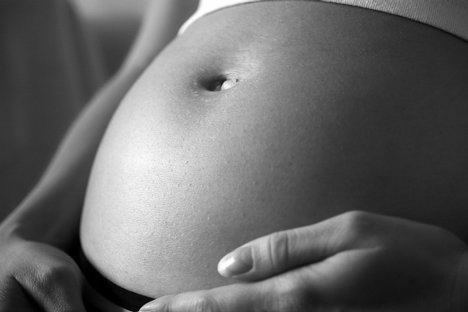by Brett Iimura and Iona Macnab
As a certified childbirth educator who has taught in Japan for over 13 years, I am often asked by both foreigners and Japanese alike what the differences are between giving birth in Japan and giving birth in a Western country. It is always interesting to me that ‘Western countries’ are so often lumped together. Depending upon what countries one chooses to include as ‘Western,’ the question covers 20 countries or more. The reciprocal question would have to lump Japan with all of the other Asian countries. Most people seem to readily understand that birth choices and protocols in Japan are not the same as in China or Vietnam, for example. By the same token, neither is birth handled the same way in The Netherlands, the US, or Spain.
Each country seems to have its own ‘color’ of birthing. These colors risk becoming stereotypes, and although certain trends can be discerned, most countries have more than one choice in terms of where and what ‘style’ of birth is available. So what is Japan’s ‘color’ and how does it differ from that of some other countries?
Most births in Japan take place in either a hospital or doctor’s clinic, however much of the labor is handled by midwives. This is similar to much of Europe, but differs drastically from North America, where less than eight percent of births are attended by a midwife. Approximately two percent of births in Japan occur in midwife-run birth houses or in private homes. This is similar to the US, as well as many countries in Western Europe, with the notable exception of The Netherlands, where more than a third of births are home births. Japan also runs neck and neck with Sweden, Hong Kong, and Singapore for the lowest infant mortality rate in the world.
The use of pharmaceutical pain relief differs widely among Western countries. British Commonwealth countries tend to lean toward the use of nitrous oxide (laughing gas), while France and the US prefer epidurals. The Netherlands, like Japan, strives for more natural, nondrug pain relief methods, however Japan also adds the strong cultural affinity for gaman, or stoic forbearance.
Another difference encountered here by many foreign women is the lack of family and close friends that they may have been supported by back home. Taking a class with several other couples gives all involved an opportunity to start building new friendships with others who are also approaching parenthood for the first time. It is difficult to recreate one’s home environment, but participating in a birth class and getting involved in various pregnancy and parenting groups can help to bridge that gap, to a certain extent.
The greatest difference between Japan and all other countries, of course, is the language and culture. In a land where ‘yes’ doesn’t always mean yes and there is often a cultural hesitation to approach foreigners, differing expectations, as well as differing interpretations of facial expressions, gestures, and intonation, often set the stage for miscommunication. Writing a birth plan can help smooth communication, since written English is often better understood than spoken English.
So where does that leave ‘the Westerner,’ or for that matter, any foreigner, giving birth in Japan? Expectations, and therefore experiences, of birth in Japan will differ depending upon the ‘other’ culture from which one comes, and how similar or different the settings, choices, and usual protocols are. If one recognizes and accepts the cultural proclivities and language barrier as a starting point, but couples that with the universality of the experience of giving birth, then one is less likely to take miscommunication personally and more likely to take positive steps toward achieving a beautiful birthing experience. Having expectations that differ somewhat from one’s host country can actually be an advantage, as this encourages women to delve more deeply into their own personal views on birth and be more proactive in the pursuit of their desires. The first steps, then, would be imagining the birth, reading up on birth issues in general, listing one’s preferences, and choosing the appropriate caregiver and setting to match one’s ideals.
Brett Iimura ICCE, mother of two, is the director of the Childbirth Education Center (CEC), serving parents-to-be throughout Japan since 1997. Iona Macnab IBCLC is a lactation consultant in private practice in Tokyo and a mother of three. They have over thirty years of combined experience in Japan, and much experience raising bilingual, bicultural children!
Parenting Tip:
Resources to Get Started
Childbirth Education Center (CEC) offers classes and consulting, as well as doula/interpreting services. Select from Early Pregnancy & Choosing a Caregiver, Birthing Your Baby, Baby Basics, Cesarean Birth Class, and the Refresher Birth Class. Contact Brett Iimura, ICCE for information: 03-3414-7458, brett@freezone.com or visit their website at www.birthinjapan.com.
Birth Education Services in Tokyo (BEST), held at the Tokyo American Club, offers Early Pregnancy & Birth Planning in Tokyo and Preparation for Birth classes for couples, as well as doula services. Contact Ann Tanaka, RN for details: 03-3482-0728, anntanaka@festa.ocn.ne.jp.
Blue Sky offers comprehensive, prenatal breastfeeding classes and post-natal breastfeeding consulting services by internationally certified lactation consultant, Iona Macnab, IBCLC. Contact 03-3425-2534 or blue.sky@gol.com.
La Leche League is an international breastfeeding support organization with monthly meetings held around Japan in English, Japanese, and French. www.llli.org/japan.html Tokyo Pregnancy Group is a free, informal, bimonthly gathering of pregnant women in Tokyo. http://tokyopregnancygroup.blogspot.com









